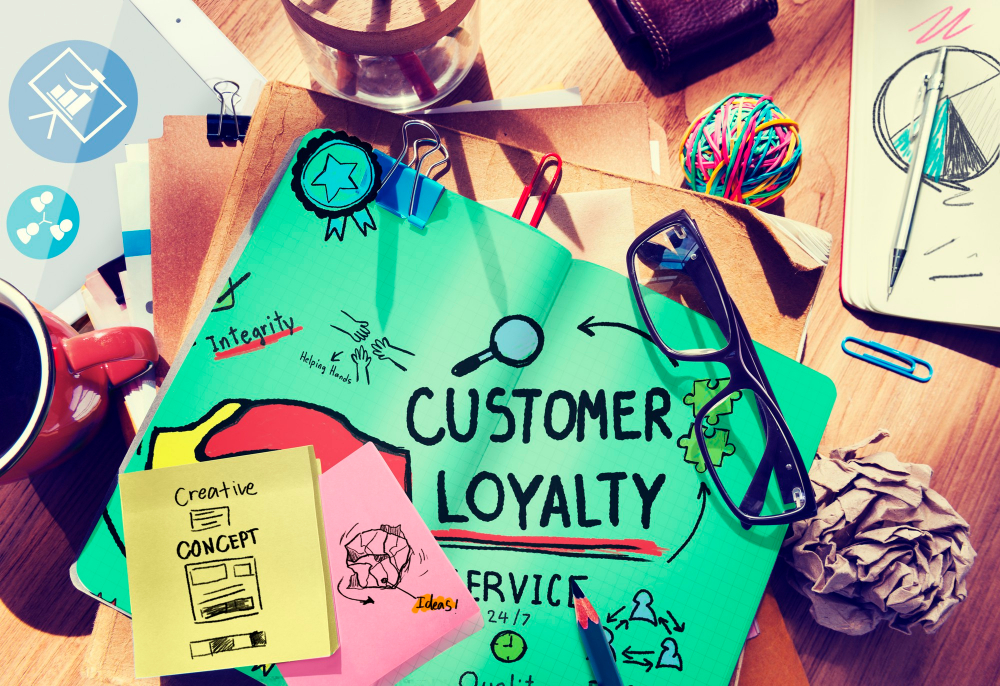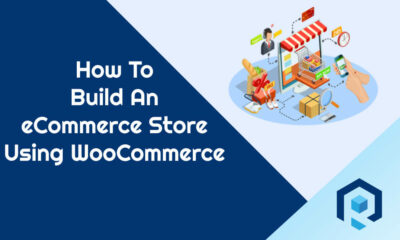MARKETING
How to Build Customer Loyalty in 8 Steps

Customer loyalty is an important factor in any business’s growth. It involves keeping customer engagement high, creating a positive customer experience, and encouraging customer retention. Loyal customers will help to create word-of-mouth exposure, increase customer referrals, and promote repeat spending.
Building customer loyalty should be a key goal for any business that wants to maximize its success for long-term growth. Achieving customer loyalty can be done through small steps such as offering rewards or discounts for loyal customers, providing excellent customer service, and personalizing customer interactions.
Eight steps to building a customer loyalty program
Hire good employees
Building a customer loyalty program can be an effective way to grow your business, but only with the right employees who understand customer service. When it comes to hiring staff to boost customer loyalty, it’s important to look for employees with strong customer service skills, like active listening and problem-solving capabilities. These individuals should also be able to recognize customer needs as quickly as possible and look for creative solutions that help build customer trust.
Furthermore, you should make sure your customer loyalty team members have excellent people skills and know how to maintain a pleasant and inviting atmosphere by having upbeat attitudes and showing genuine enthusiasm while engaging customers. By doing so, you will ensure you have the right talent in place to make your customer loyalty program both successful and rewarding. If your company chooses a hybrid workspace, it can bring challenges as well, so check whether your employees have all resources to increase customer loyalty.
Identify loyal customers
Identifying loyal customers to build a successful customer loyalty program starts with customer data analytics, as customer data can provide insight into customer behavior, preferences and shopping habits. Through customer data analytics, businesses can create marketing campaigns that target the most frequent and highest-spending customers, offering them special rewards or discounts for their loyalty. This way, not only can you get higher conversion rates, but you also increase sales too.
Additionally, businesses should strive for customer satisfaction in order to identify who their most loyal customers are; customer feedback surveys on products and services, allowing customers to provide honest answers anonymously, can be an effective tool in learning which customers will remain loyal even through difficult times or changes.
Research customer needs and wants
Building customer loyalty through successful customer loyalty programs is key to developing any modern business. To do so, thorough research into customer needs and wants must be conducted. In addition to this, you can formulate a lead generation strategy that will help you create campaigns that target customers’ needs.
Companies should consider surveys, customer feedback, and customer service records when determining how to improve customer loyalty. Additionally, interviews with customers and focus groups can provide invaluable insight into not only customer behavior but what customers want from their customer experience. Building customer loyalty requires an understanding of individual customer needs, wants, and values; research provides the basis for this development.
Find ways to incentivize customer behavior
A customer loyalty program is only as successful as the customer engagement and activity that it inspires, so providing incentives to customers who regularly interact with or purchase from your business is essential. Doing so can be as simple as offering discounts or special offers on products related to those they have already purchased or sending out bonus points for referrals.
Keeping customer activity fresh and creative by introducing new incentives can often help ensure customer loyalty over time. Incentivizing customer behavior will make them feel valued while also sparking excitement and enthusiasm each time they engage with your brand. When your online school offers courses on how to become an air hostess, connect with your students, and encourage them to share their success stories and give rewards.
Provide specific rewards for customer loyalty
Organizations that wish to create a customer loyalty program should recognize the importance of providing specific rewards for customer loyalty. In order to incentivize and reward customer loyalty, companies should consider implementing programs that provide considerable discounts on goods or services, exclusive access to products before they go public, or other tangible benefits. Consumers will be more likely to engage in loyalty programs with clear, achievable outcomes that preserve their customer status and offer unique opportunities they would not normally experience elsewhere. Reward customers who are using your digital learning platforms by offering discounts for a premium plan for your educational solution.
Train Employees Constantly
Companies can start by recruiting a customer loyalty team collected of customer-service-oriented individuals who have in-depth training in customer management philosophies and techniques.
The team should regularly conduct refresher courses for other employees to make sure everyone understands the goals of the customer loyalty program and how those goals should be met. Additionally, employees should receive training on customer service protocols, such as how to handle customer feedback quickly and courteously, using their knowledge of customer loyalty principles to address customer complaints with tact and empathy. When promoting your healthcare chatbot, ensure that your employees are equipped to market it in a perfect way.
Be responsive
Responding promptly and appropriately to customer inquiries, feedback, and questions paves the way for customers to trust the brand and its customer loyalty program. Companies should make sure customer service representatives are equipped with the right tools to quickly provide customer support, as well as create personalized experiences that encourage customers to come back often. Building customer loyalty is an essential step to grow your audienceans the basis for a business’s long-term success, and staying on top of customer responsiveness can help make it happen.
Brand Your Loyalty Program
Establishing customer loyalty is essential for any business. One method to accomplish this is to build a loyalty program that rewards customers and encourages them to keep returning. Branding your loyalty program is key to gaining customer trust and creating long-term customer relationships. Using customer feedback, ask yourself questions such as how could you make it smoother for customers to benefit from the program while holding customer data securely?
Put thought into the design features such as graphics, customer incentives, and customer communication channels so customer loyalty will build over time. With thoughtful planning and attention to customer service standards, your customer loyalty program will lead to success.
Conclusion
Customer loyalty is crucial for the success of any business, but fostering it can be a challenge. Organizations should, where possible, reward customer loyalty in order to reap the rewards long-term. Ultimately customer loyalty is essential to retain customers and grow the customer base. It’s not only important for customer satisfaction, but it also helps increase customer retention, which enables businesses to drive revenue growth and build sustained customer satisfaction.
Dedicating time and effort to genuinely connect with your customers on this level will go a long way in increasing customer loyalty over time. By having a well-thought-out strategy and dedication, businesses can ensure they build lasting relationships with their core customer base, which will keep them coming back more often and ultimately boost business profits in the future.









![How to Create A Website to Sell Products In 8 Steps [+6 Expert Tips] How to Create A Website to Sell Products In 8 Steps [+6 Expert Tips]](https://articles.entireweb.com/wp-content/uploads/2024/10/1727868370_How-to-Create-A-Website-to-Sell-Products-In-8.webp-400x240.webp)
![How to Create A Website to Sell Products In 8 Steps [+6 Expert Tips] How to Create A Website to Sell Products In 8 Steps [+6 Expert Tips]](https://articles.entireweb.com/wp-content/uploads/2024/10/1727868370_How-to-Create-A-Website-to-Sell-Products-In-8.webp-80x80.webp)








You must be logged in to post a comment Login